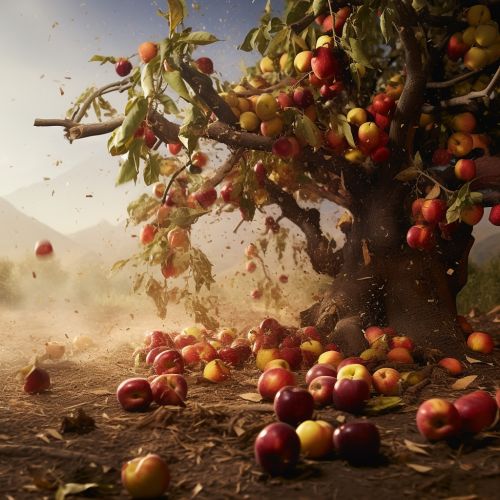Seed Dispersal
Introduction
Seed dispersal is a fundamental process in plant ecology, playing a critical role in the spatial distribution of plants. It involves the movement or transport of seeds away from the parent plant. This process is essential for the propagation and survival of plant species, as it allows them to colonize new habitats and maintain genetic diversity.
Types of Seed Dispersal
There are five primary methods of seed dispersal: gravity, wind, ballistic, water, and by animals.
Gravity
Gravity dispersal, also known as barochory, is a type of seed dispersal where seeds fall from the plant due to the force of gravity. This is the simplest form of seed dispersal, and it often applies to plants that produce heavy fruits and seeds.


Wind
Wind dispersal, or anemochory, is a method of dispersal where seeds are carried away by the wind. Plants that use this method often produce lightweight seeds or seeds with special adaptations such as wings or hairs that allow them to be carried by the wind.
Ballistic
Ballistic dispersal, also known as autochory, involves the plant ejecting the seed into the air. This can be achieved through a variety of mechanisms, including tension, torsion, and pressure.
Water
Hydrochory, or water dispersal, is a method where seeds are dispersed by water. This can occur in both freshwater and marine environments. Seeds dispersed by water often have adaptations such as buoyant tissues or waterproof coverings.
Animal
Zoochory, or animal dispersal, involves seeds being dispersed by animals. This can occur in several ways, including ingestion and subsequent excretion, adherence to fur or feathers, and caching or burying by animals such as squirrels or jays.
Factors Influencing Seed Dispersal
Several factors can influence the effectiveness of seed dispersal, including the size and shape of the seeds, the density and type of vegetation, the presence of dispersal agents, and environmental conditions such as wind speed and direction, and water currents.
Implications of Seed Dispersal
Seed dispersal has significant implications for the ecology and evolution of plants. It influences plant distribution and abundance, community structure, genetic structure, and the potential for plant species to adapt to changing environmental conditions.
Human Influence on Seed Dispersal
Humans can have a significant impact on seed dispersal processes. Activities such as habitat fragmentation, land-use change, and the introduction of non-native species can alter seed dispersal patterns and have profound effects on plant populations and communities.
